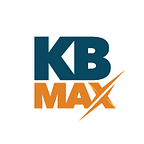Let’s begin with the end this time round-
The more you allow your customers to become a part of their purchasing process, the higher are the chances of you making a sale. This freedom begins with the seamless integration of everything you have on offer in terms of technology, which is an agile CPQ strategy that integrates the CPQ configurator, CAD, ERP, and other options that you have to streamline your sales process, together.
While making sales sounds like a simple process, the case is the exact opposite. If you even think of putting technology that enables CPQ for manufacturing, it does not take a lot of observation to understand that there’s a huge gap between customer expectations, engineering abilities, and delivered products, leading to a significant disconnect in itself.
It’s a big reason why it’s high time for manufacturers to put their best foot forward, and satisfy those customer perceptions in the best manner possible. With an Agile CPQ approach, the sales, marketing, and engineering teams come flawlessly together, reducing the silos between customers and manufacturing companies dramatically.
Agile CPQ Strategies- What’s the Need?
With evolving technology, data, information, insights, and intelligence have completely revolutionized customer experience to levels that weren’t possible before. Legacy systems and manually editing those tiresome Excel spreadsheets with little to no product variations.
The future manufacturers will be able to harness intelligence, using it to bring in more customers, where Agile CPQ strategies will be of help.
How Agile CPQ Configurator Strategies Enhance Sales
Agile strategies for better CPQ customer experience can understand the customer perceptions in a better way, thanks to real-time insights that generate quicker and more efficient responses.
Instant gratification is the name of the game, and quicker resolution of client needs allows better closing of deals.
Here are a few reasons why Agile CPQ is the way of the future and is going to be a huge success in the time to come-
More Leads worth Higher Margins
The main purpose of Agile CPQ is to reduce the many configuration gaps that exist for manufacturers and allow them to sell products that have the highest profit margins, that is, the most configurable.
Bringing ERP, CAD, and CRM systems together delivers a reliable platform for better margins. Integration of multiple systems in real-time provides an opportunity to share the manufacturing and engineering data, resulting in better overall sales.
Fine-Tuning the Marketing Mix & Reducing Sales Cycles
When teams get an understanding of how their manufacturing decisions have an effect on customers in real-time through their CRM system, the marketing team can direct their efforts to fine-tune their product offerings to better serve their customers.
The added product promotions are integral aspects in driving better sales where sales cycles get reduced and product pipelines get cleared in quick time.
Boosting the Time-to-Market Duration for Configured Products
By leveraging the performance efficiency of existing systems, Agile CPQ strategies change the face of CPQ for ecommerce by increasing their response time more than ever before, making the product launch a phase that delivers the maximum revenue possible.
Ensuring product delivery to the market within the prescribed timelines also becomes a reality with Agile CPQ strategies.
Guided-Selling for Better Upselling and Cross-Selling
A large part of CPQ vendors today is making use of guided selling, enabling some amount of configuration from the customers’ point without fail. When combined with the right customer insights, the sales and marketing teams can collaborate and suggest the best products that will be ready for delivery given the market conditions and scenarios.
Delivering high-quality products by understanding customers well before in advance has its own set of effects on the overall revenues of an organization.
Cutting the Pricing Errors
Whatever be a manufacturer’s choice of marketing channels, uploading a product catalog with the prices is one of the most basic tasks. However, with complex products, a single, static list might just not be enough.
It happens in the absence of integration between the ERP, CPQ, and pricing systems, where customers come only once, never to return after experiencing price fluctuations in what they paid vs. what they received. With Agile CPQ strategies built on a solid configuration model, prices get automatically updated with every single configuration, leading to more deal closures in the process.
While the process of implementing Agile CPQ is tough, it’s quite simple- as a manufacturer, you need to do it. With a tool like KBMax, bringing Agile CPQ too won’t be a worry, as integration is one of the many things it does best.
